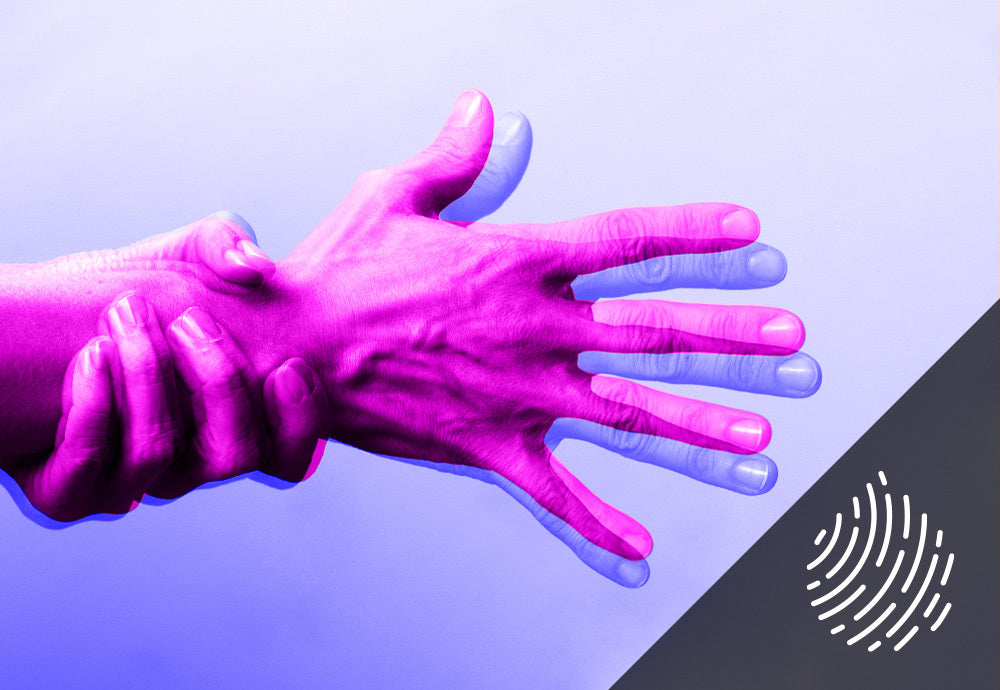Your Cart is Empty
FREE SHIPPING ON ORDERS $70+ | SATISFACTION GUARANTEED
Psychedelics (also called hallucinogens) are a category of drugs that alter mood, perception, and cognitive processes.
Over time, psychedelic drugs have weaved their way in and out of favor. They’ve been used in spiritual rituals, medicinal applications, and recreationally. They’ve also been frowned upon and criminalized.
After a long-waged war on drugs in the United States, which rippled into other countries, people are rediscovering the potential of these mind-altering substances.
Unless you start your day with The Psychedelic Digest, there’s a lot to catch up on in the space.
We think that sounds like a very good excuse for a trip through some of the most common substances and their evolutions in the medical world and society. Let’s get started.

Psychedelic mental health therapies were touted as cutting-edge from the 1950s through the early 1970s.
Then, in the 1970s, the Controlled Substances Act placed many drugs on the FDA’s list of controlled substances as Schedule I drugs. Schedule I is code for “no currently accepted medical use and a high potential for abuse.”
The act put a stop to most research.
Today, the psychedelic renaissance is being pioneered by mental health professionals yet again. Clinical trials are increasingly common, and pharmaceutical companies are deriving new drugs from psychedelics. Even Johns Hopkins University has a Center for Psychedelic Research.
In the case of cannabis, (yes, it is technically a mild psychedelic drug), legalization has expanded access. This is largely normalizing the once-shunned plant.
Let’s take a closer look at trending substances — which is, apparently, a thing now — including their history, uses, and current status.
We’ll start in familiar territory with our friend, cannabis — aka Cannabis sativa L. — which includes hemp and marijuana. These are the plants from which we get cannabinoids like THC, CBD, and delta-8.
Although cannabis has been outlawed in many countries over the past century, it was a regular ol’ crop throughout the vast majority of history.
Marijuana was consumed for religious ceremonies and as medicine. It may have also been enjoyed casually — just another thing to fill your pipe with to help you unwind at the end of the day. Meanwhile, the hemp variety was used to make fibers and parts of the plant were eaten.
In the US, marijuana was made illegal in 1937, decades before other psychedelics. The film Reefer Madness portrayed it in a dubious light, setting the stage for decades of polarized opinions and a hippie culture parents warned you about.
Fast-forward to now. CBD is federally legal. Marijuana has the green light for recreational use in some states. Medical cannabis programs are in even more parts of the country.
And with non-psychoactive CBD and less-psychoactive delta-8-THC on the scene, cannabis products are widely used and accepted.
Normalized use plus extensive research have established cannabis’ place in the minds of many as a safe solution for a spectrum of mental and physical health challenges.(1)
MDMA is short for 3,4-methylenedioxymethamphetamine. We’ll stick with MDMA, so don’t worry about trying to sound that one out.
When what we know as MDMA was first created in 1912, it was known as Methylsafrylaminc, a medication used to control bleeding.
Being a little-known drug, Methylsafrylaminc slipped through the cracks of the Controlled Substances Act. Some psychiatrists used it to improve communication with patients and improve their mood and outlook on life.(2)
It also ended up on the streets, where it was known by its monikers molly and ecstasy. It was also sometimes cut with other things, leading to a surge of designer drugs. The street activity attracted attention from law enforcement, which landed MDMA on the list of Schedule I drugs in 1985.
Since then, MDMA has returned to the medical realm. MDMA-assisted psychotherapy was even designated a breakthrough therapy by the FDA in 2017.
MDMA-assisted psychotherapy is what it sounds like — psychotherapy (aka talk therapy) is paired with doses of MDMA. In clinical trials, the therapy is being explored as a treatment for:
Some clinical trials are in phase III — the last phase of testing before the treatment is submitted to the FDA for review. Being released into the market is the phase after that, so don’t be surprised if you start hearing more about MDMA therapy soon.
Psychedelic mushrooms have been part of shamanistic and religious ceremonies since at least the dawn of the common area.(6)
These mushrooms are from the Psilocybe genus, which is where the main psychoactive substance psilocybin got its name.
Despite their long history, mushrooms weren’t easily accepted into post-colonized America — and not just the psychedelic variety. Mushrooms didn’t become widely accepted as a food until French chefs showed the west what could be done with the humble fungus in the late 1800s.(6)
It’s likely culinary adoption made mushroom eating, and therefore foraging more common. And how would foragers-in-training be taught what to look for if they didn’t also know which mushrooms were poisonous, and which were more *magical* than the rest? Surely some sampling occurred.
In 1957, psilocybin was isolated from mushrooms for the first time by a Swiss chemist. It became a widely tested tool for psychotherapy.
As a (shall we say) renewable natural resource, magic mushrooms continually dripped into the hands of recreational drug users. Eventually, psilocybin landed a Schedule I drug classification, grinding research to a halt.
Researchers took a second look at psilocybin in the early 21st century with a focus on depression. In 2021, a phase II clinical trial was published showing some promising early results for psilocybin’s use as an anti-depressive therapy.(7)
The state of Oregon became the first state to legalize psychedelic mushrooms for therapy in 2020.(8)
With Oregon as a real-world experiment and research ongoing, we’ll learn whether psilocybin spores have staying power for mental health therapy.
Would any list of hallucinogens be complete without LSD? Not a chance.
In case you don’t know the story…
LSD was created in the 1930s by Albert Hoffman, a Swiss scientist. After accidentally consuming a small amount, he realized the chemical had intense hallucinogenic effects.
Psychiatry embraced LSD therapy in the 1950s and 1960s as a treatment for alcoholism and a complement to psychotherapy and psychoanalysis.(9)
Recognizing its mind-controlling potential, the CIA tested the use of LSD during the Cold War through Project MK-Ultra. One volunteer from the project by the name of Ken Kesey trickled the LSD experience into society through parties-slash-Grateful Dead concerts known as “Acid Tests.”
In the early 1960s, psychology professors Timothy Leary and Richard Alpert gave LSD to their Harvard university students. Although LSD wouldn’t be illegal until 1968, the stunt attracted media attention — and cost them their jobs.
Post-illegalization, LSD has remained a symbol of counterculture while remaining taboo.
Recently scientists have been revisiting the findings of the first LSD therapy trials and formulating new hypotheses. LSD is currently in the early stages of being tested as a therapy for depression.
Ayahuasca is made from botanical ingredients, which are brewed to make a hallucinogenic tea. It was developed in South America for spiritual ceremonies with use dating back at least 1,000 years.(10)
Although ayahuasca is natural and plant-based, it’s incredibly powerful. Euphoria and hallucinations are expected. So are paranoia, fear, diarrhea, and vomiting.
The intensity of ayahuasca comes from two main compounds: DMT and β-carbolines. Here’s what we know about them:(11)
Ayahuasca isn’t receiving as much scientific attention as other psychedelics, likely because the reward comes with the risk of an unpleasant trip.
In case you’re wondering, ayahuasca isn’t a Schedule I drug in the US, but the compound DMT is. People interested in trying ayahuasca therapy can seek out a clinical trial or find an experienced shaman in South America, where it is legal.
Originally developed as a veterinary anesthetic, ketamine segued into human operating rooms in the 1970s. It’s not your typical anesthetic, though — it doesn’t slow heart rate or breathing.
At some point, doctors and first responders started using ketamine to help calm people having suicidal thoughts and anxiety. They eventually noticed that patients tended to feel better long after they took the drug, and extensive research began taking place.
Unfortunately, so did some illegal ketamine parties. But with ketamine clearly having medical uses, it was classified as a Class III drug under the Controlled Substances Act, allowing research to continue.
In 2019, the FDA approved a ketamine nasal spray medication to be used for treatment-resistant depression, making it the first FDA-approved psychedelic therapy.(12)
Some psychedelics are mild, while others are powerful. Each offers unique benefits. Collectively, they’re changing the landscapes of health and wellness.
After many years of being cast in the dark, psychiatric medicine is recognizing and exploring psychedelics as a viable option for therapy. Meanwhile, the many forms of cannabis bring mildly psychoactive or trip-free experiences that benefit the body and mind.
If you’re considering psychedelic therapy, seek out a qualified professional or clinical trial. For cannabis, consider what legal options are available to you. If marijuana isn’t on the table, CBD is legal in all 50 states — you can even buy CBD online. Delta-8-THC is another great option.
CURIOUS ABOUT CBD AND DELTA-8-THC? START HERE
References

The cannabis compound CBD has been popping up in Parkinson’s disease (PD) therapy and prevention conversations, propelled by success stories from p...
Read More
CBD is one of the most popular supplements on the market today. But you're a savvy consumer. You know just because something is popular doesn’t mea...
Read More
You know delta-8 as "weed-lite" or the "chillest of the cannabinoids." But what about all the potential health benefits of this unique compound? Wh...
Read More